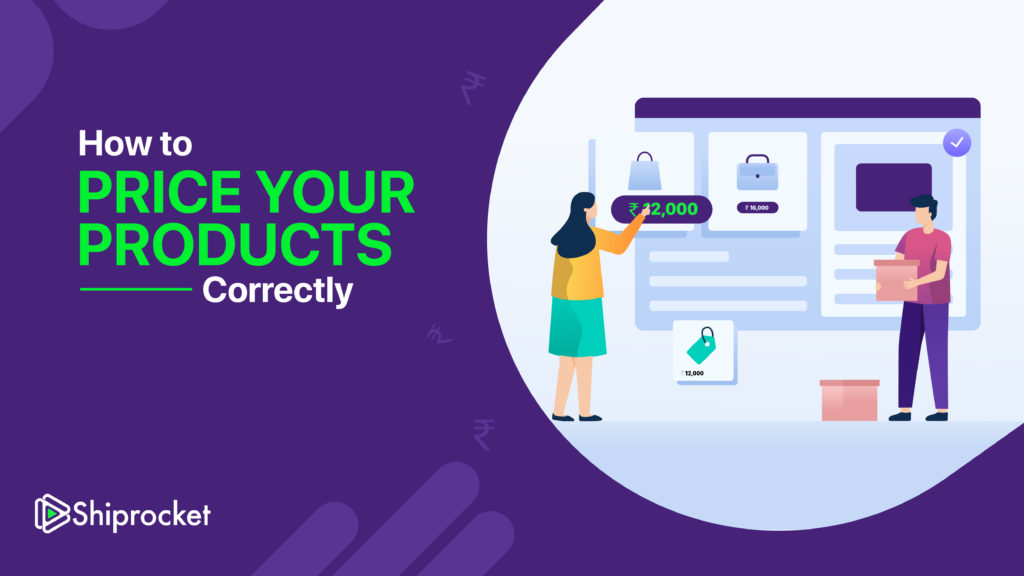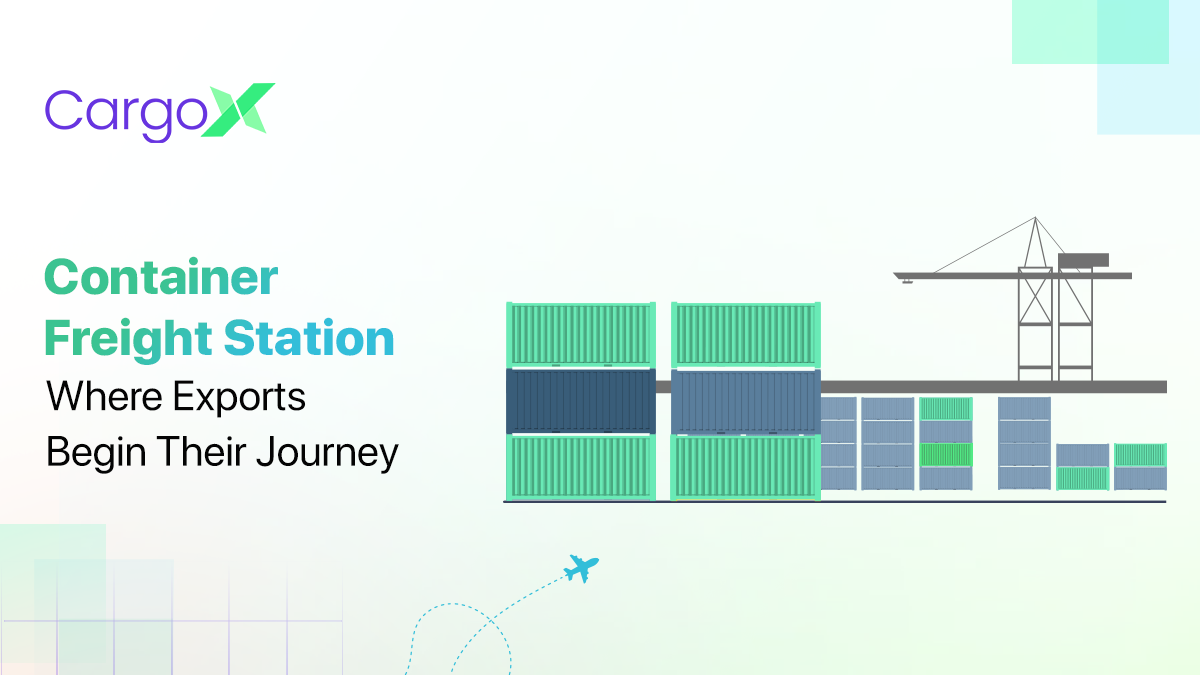Product Pricing: Steps, Benefits, Factors, Methods, & Strategies
- What is Product Pricing?
- What are the Objectives of Product Pricing?
- What are the Benefits of a Product Pricing Strategy?
- Factors Influencing the Price of a Product
- Top 5 Product Pricing Methods
- Other Strategies to Price Your Products
- How to Price Your Product
- What are the Steps to Creating a Product Pricing Strategy?
- Test and Review Once You’re Live
Pricing your products is one of the cornerstone decisions you’ll make because it impacts almost every aspect of your business. Your pricing is a deciding factor in everything from your cash flow to your profit margins to which expenses you can afford to cover.
The most crucial element of your price is that it needs to sustain your business. If you price your products at a loss or an unsustainable profit margin, you’re going to find it challenging to grow and scale.
Other essential factors that your pricing needs to account for include how you’re priced concerning your competitors, your pricing strategies for your business, and your customers’ expectations. But before you can worry about anything like that, you need to make sure you’ve found a sustainable base price.

What is Product Pricing?
Product pricing refers to the process of setting a selling price for your product or service. In simple terms, this process will decide how much you charge your customers for your product. The price of your product should consider all the costs associated with producing and selling it. You should also consider what your target customers are willing to pay for the product. Product pricing’s primary goal is to match the value of your product or service with its customer demand and costs. It can help set you competitive prices for your product and maximise profits.
What are the Objectives of Product Pricing?
Let’s look at the primary objectives of product pricing.
- You should consider all variable and fixed costs associated with your product during the product pricing process. It’s essential because all businesses face the risk of getting eliminated from the market due to heavy competition. Changing customer behaviour and preferences also pose a risk. Once your product has passed the survival stage, you can aim for higher earnings.
- Most businesses try to increase their profit margins by analysing the demand and supply for their products in the market. That’s why they price the product based on the demand for the product and its alternatives available in the market. Product prices will increase when the demand for your product increases.
- Initially, businesses price their products at a lower price to capture a sizeable portion of the market. Once they succeed in raising demand and lowering their production costs, they are in a position to better control the market and increase sales and profits.
- Businesses often charge a premium for their unique and novel idea relating to their technologically advanced product. The reason behind the high price of a product is the high manufacturing cost incurred to produce it.
What are the Benefits of a Product Pricing Strategy?
Let’s examine the benefits of a strong product pricing strategy for your business.
Your customers can perceive the term ‘cheap’ in two different ways. Though it can mean your product is priced lower, it can also be perceived as being poorly made. That’s why people often associate lower-priced products with lower-quality products. However, the higher price of the product will portray its higher quality and value.
Indeed, the higher price of the product will convey its value to your customers. However, if it’s priced too high than what your customers are willing to pay, it wouldn’t matter. If you price it too low, your product may be passed over. A product pricing strategy can help you set an ideal price for the product – a price that can convince your customers to buy your products over your competitor’s products.
Since you are selling the product you manufactured, you’re already convinced it’s a winning product. What’s important is to convince your customers that the product you’re selling is exactly what they need. A weak product pricing strategy will not portray the actual value of your product. Some customers prefer value and quality, while others may prefer luxury. A strong product pricing strategy can help you price your products in a way that matches the demand preferences of your target customers.
Factors Influencing the Price of a Product
Several factors come into play when setting your product price. Here are some of the most influential ones.
- Costs
Generating revenue is essential for all businesses to stay afloat in the market. The revenue you generate must be higher than the expenses you incur in producing and selling a product.
Overhead costs include all the expenses you have incurred to produce the product. Though there are several costs you may incur, they will depend on your company structure and product. You should calculate all costs beforehand to price your products in a way that doesn’t hinder your business growth. These include:
- Research and development expenses
- Regular maintenance expenses, especially for software products
- Production costs, including labour, raw material, utilities, etc.
- Distribution and shipping costs
- Rent and other utility costs
- Marketing and advertising expenses
- Sales and customer support
The price of your product will reflect its value. You should consider its quality, special features, customer demand, and overall brand value when pricing your product. It will help you choose the right price for your product.
You should also analyse what your competitors charge for similar products in the market. Your competitor’s pricing structure will also greatly influence your product pricing strategy.
- Higher profit margins
The profit margin is the amount you earn from selling your products and subtracting all expenses you’ve incurred from the revenue you earn. A high profit margin is essential to keep a business running. It helps them pay their employees, generate returns for their investors, etc. There are two types of profit margins you should consider. These include net and gross profit margins. Net profit refers to the amount of revenue you have left after subtracting all expenses, including operational and overhead costs. Gross profit, on the other hand, refers to the amount you have left after you have subtracted production costs from sales revenue. The ideal profit level will vary from one business to another and is influenced by several factors, including your company size, industry, the type of products you’re selling, etc.
How sensitive customers are to price changes will also influence the price of your product. If you increase the price too much and the demand for your product decreases, it may not bring in the profit you hoped to earn.
- Target audience
Your ideal customer profile (ICP) will be a key factor in determining your product’s price. ICP is a detailed description of your target customers. It’s based on extensive market research and customer data. ICP can help your business target the right demographics and tailor your product’s prices accordingly. Eventually, it’ll help you maximise profits. When you look at your ideal customers, you’ll have to consider their willingness to pay, customer lifetime value (CLV), and pain points.
Once you have identified your target audience, you can offer discounts for product bundles or bulk orders. You can adjust your product pricing strategy to recurring revenue structure or volume-based pricing.
- Market demand
Determining how much you want to charge for your products is easy. However, it’s difficult to determine how much your customers are willing to pay for your product. You’ll also have to figure out if there’s enough demand for your product in the market. Here are some points you should consider to get these right.
- Identify the value your products will be offering to your customers
- Research your competitor’s pricing structure and strategies
- Analyse your customers’ behaviour, preferences, shopping patterns, etc.
- Consider any seasonal changes that may affect customer demand
If your product is completely new, you can test different pricing models with a select group of customers. It’ll help you understand the market better.
- Market prices
There will always be competitors vying for a sizable share of the market. Once you have identified the value your products offer to your customers, you can price your products at competitive prices within your industry. You should also keep in mind that the cost of your products does not have to be fixed. You can experiment with different product pricing techniques and models, increasing or decreasing the prices when needed.
- Distribution channels
You should also consider how you’ll distribute your products when setting their prices. There are various distribution channels available. These include eCommerce websites, online marketplaces, retail stores, etc. Each channel has different costs associated with them. You may also have to consider each of their pros and cons.
Your business goals and the overall market situation will also determine the product pricing strategy you opt for and the price you set for your product. Depending on the complexity of your products, you may have to consider different pricing models.
Top 5 Product Pricing Methods
There are several product pricing techniques. Some product pricing techniques are highly quantitative, while others have a qualitative element. The former mostly considers the objective factors, including its cost, etc. However, the latter takes into account the overall value of a brand. Depending on the perceived value of your products and other factors, you can select from a wide range of product pricing techniques. These strategies help you set a price that is attractive to your customers and higher than your product’s manufacturing costs.
1. Value-Based Pricing
Value-based pricing sets prices primarily on the perceived value to the customer rather than on the cost of production. This strategy requires a deep understanding of customer needs, preferences, and willingness to pay. Businesses can charge a premium by emphasising the unique benefits and advantages of the product. This approach is often used in luxury markets where customers are willing to pay more for perceived exclusivity and quality.
For instance, brands like Apple used value-based product pricing techniques to showcase the value of their products and unique and premium features.
2. Competitor-Based Pricing
Competitor-based pricing involves setting prices based on what competitors charge for similar products. This strategy is useful in highly competitive markets where price wars are common. By analysing competitors’ prices, businesses can decide whether to match, undercut, or price slightly higher, depending on their positioning and value proposition. This method helps maintain market relevance and can be effective in attracting price-sensitive customers.
3. Cost-Plus Pricing
Cost-plus pricing is a straightforward method where businesses add a fixed percentage markup to the cost of producing a product. This ensures that all production costs are covered, along with a guaranteed profit margin. This method is particularly prevalent in the retail and manufacturing sectors. However, it does not consider external factors such as market demand or competitor pricing, which might lead to prices that are either too high to attract customers or too low to maximise profitability.
4. Market-Oriented Pricing
Market-oriented pricing, or demand-based pricing, sets prices based on market demand and customer willingness to pay. This method requires comprehensive market research and real-time data analysis. Prices are adjusted according to various factors such as seasonality, customer behaviour, and economic trends. Airlines often use this product pricing strategy. It helps them adjust ticket prices based on fluctuations in demand.
5. Dynamic Pricing
Dynamic pricing adjusts prices in real-time based on demand, supply, and other external factors. This strategy uses advanced algorithms and data analytics to optimise pricing. It is commonly used in industries like travel, hospitality, and eCommerce. This method maximises revenue and resource utilisation but can sometimes lead to customer dissatisfaction due to perceived unfairness in price changes.
Other Strategies to Price Your Products
Here are some additional product pricing strategies.
- Price Skimming
Price skimming involves setting high prices initially and lowering them over time. This strategy targets early adopters willing to pay a premium for new products. Over time, as the market matures, prices are reduced to attract a broader audience. This method is commonly used in technology markets where new gadgets are launched at a premium price.
- Penetration Pricing
Penetration pricing sets a low price to enter a competitive market and attract customers quickly. Once a substantial market share is captured, prices are gradually increased. This strategy is effective for new market entrants looking to disrupt established competitors. However, initial low prices can lead to short-term losses.
- Promotional Pricing
Promotional pricing involves temporary price reductions to boost sales or market awareness. This can include discounts, coupons, or special offers. Promotional pricing creates urgency and can significantly increase short-term sales. However, overuse of this strategy can erode brand value and lead customers to expect frequent discounts.
- Freemium Pricing
Freemium pricing offers basic products or services for free while charging for premium features. This model is popular in software and digital services. It helps build a large user base, from which a segment converts to paying customers for added features. Some common examples include Spotify and LinkedIn.
- Bundle Pricing
Bundle pricing offers several products or services at a lower price than if purchased separately. This strategy increases perceived value and encourages customers to buy more. It is widely used in the retail and hospitality sectors. For instance, fast-food chains often bundle meals at a discounted price.
- Psychological Pricing
Psychological pricing leverages consumer psychology to make prices more attractive, such as setting prices just below a round number (e.g., Rs. 199 instead of Rs. 200). This method can influence customer perception and increase sales by creating an impression of better value.
How to Price Your Product
- Add up your variable costs (per product)
- Add a profit margin
- Assess the Market
- Don’t forget about fixed costs
There are 4 straightforward steps to calculating a sustainable price for your product.

Add Up Your Variable Costs (per product)
First and foremost, you need to understand all of the costs involved in getting each product out the door.
If you order your products, you’ll have a straightforward answer to how much each unit costs you, which is your cost of goods sold.
If you make your products, you’ll need to dig a bit deeper and look at a bundle of your raw materials. How much does that bundle cost, and how many products can you create from it? That will give you a rough estimate of your cost of goods sold per item.
However, you shouldn’t forget the time you spend on your business is valuable, too. To price your time, set an hourly rate you want to earn from your business, and then divide that by how many products you can make in that time. To select a sustainable price, make sure to incorporate your time as a variable product cost.
You are wondering what kind of promotional materials you might need for your products. One of the most common ones in an e-commerce context is marketing materials or additional gifts to level up your e-commerce packaging and unboxing experience.
Add a Profit Margin
Once you’ve got a total number for your variable costs per product sold, it’s time to build profit into your price.
Let’s say you want to earn a 20% profit margin on your products on top of your variable costs. When you’re choosing this percentage, it’s important to remember two things.
- You haven’t included your fixed costs yet, so you will have costs to cover beyond just your variable expenses.
- You need to consider the overall market and ensure that your price with this margin still falls within the overall “acceptable” price for your market. If you’re 2x the price of all of your competitors, you might find sales become challenging depending on your product category.
Once you’re ready to calculate a price, take your total variable costs, and divide them by one minus your desired profit margin, expressed as a decimal. For a 20% profit margin, that’s 0.2, so you’d divide your variable costs by 0.8.
In this case, that gives you a base price of $17.85 for your product, which you can round up to $18.00.
Target Price = (Variable cost per product) / (1 – your desired profit margin as a decimal)
Assess the Market
Conduct market research when you determine a price for your product. It’s important because it’ll help you ensure a fair price for your product. A fair price is a price that’s attractive to your customers. Your competitors’ pricing structure is an essential part of assessing the marketing. The amount they are charging for their products will determine whether you want to price your produce the same, lower, or higher. Assessing the market will also help you determine how in-demand your product is and whether the prices are competitive enough.
Don’t Forget About Fixed Costs
It’s important to remember that variable costs aren’t your only costs.
Fixed costs are the expenses that you’d pay no matter what, and that stays the same whether you sell ten products or 1000 products. They’re an essential part of running your business, and the goal is that they’re covered by your product sales as well.
These calculations can help you make an informed decision about the balance between covering your fixed costs and setting a manageable and competitive price.
Find out everything you need to know about performing a break-even analysis, including what to watch out for and how to interpret and adjust based on your numbers.
What are the Steps to Creating a Product Pricing Strategy?
Let’s find out how you can create a winning product pricing strategy.
- Evaluate Pricing Potential
You want your pricing strategy to be optimal for your business. That’s why you should start by analysing your pricing potential. Several factors will influence your pricing potential. These include operating costs, geographical market conditions, inventories, demographic data, demand fluctuations, and competitive advantages.
- Analyse Historical Data
Analyse your older product pricing strategies. It can help you calculate churn rates, closed deals, or products sold on different pricing structures. Determine which product pricing strategy has worked best for your business.
- Strike a Balance Between Value and Business Goals
When pricing your products, you want to make sure it’s fair to both your business as well as your competitors. This will help your business and your customers by improving cash flow, profitability, market penetration, lead conversions, and expanding your market share.
- Conduct Competitive Analysis
When conducting competitive research, you’ll often see a difference between what your competitors are charging and what you’re planning to charge. Your goal should be to beat the price and value your competitors are offering. You can make your product more affordable to beat your competitor’s price. Alternatively, you can price it higher if your product offers great value to your customers.
- Choose an Ideal Pricing Model
Lastly, you should choose a pricing model and structure based on your competitor and market research. You should keep your product pricing flexible. It’ll help you quickly adjust your product prices to the changing market conditions. Your pricing strategy should also help you take advantage of changes in customer demand and seasonal trends.
Test and Review Once You’re Live
Don’t let the fear of choosing the “wrong” price hold you back from launching your store. Pricing is always going to evolve with your business, and as long as your price covers your expenses and provides some profit, you can test and adjust as you go. Run a price comparison to see how your strategies stack up.
Taking this approach will give you a price you can feel confident about because the most important thing when it comes to pricing is that your pricing helps you build a sustainable business. Once you have that, you can launch your store or your new product and use the feedback and data you get from customers to adjust your pricing strategy in the future.








